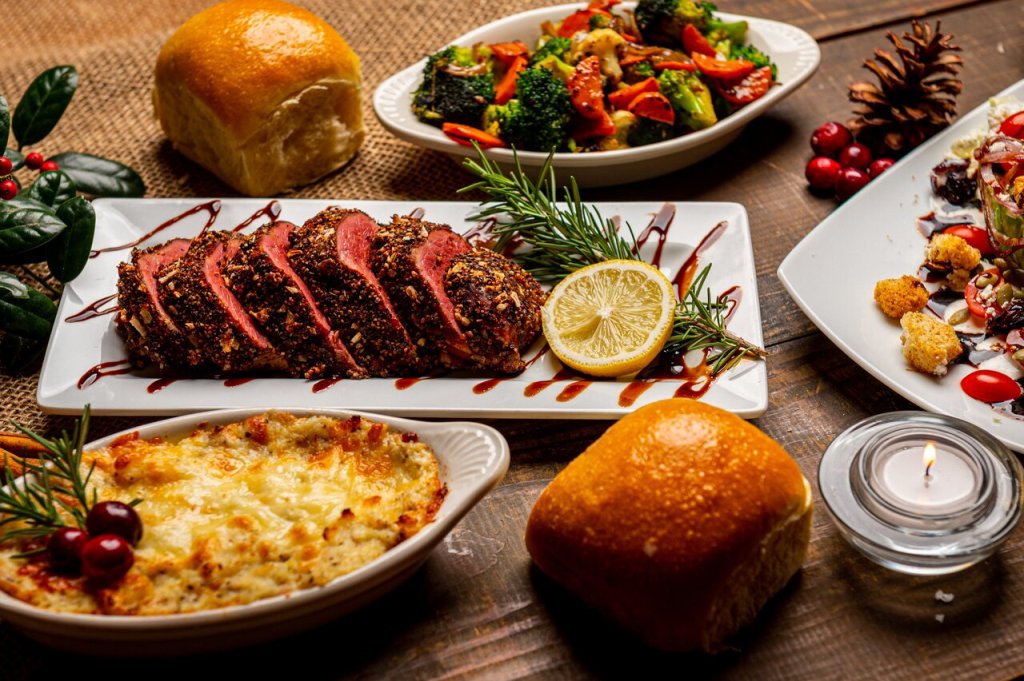2024 Holiday Grocery Outlook
The 2024 holiday season is shaping up to be a dynamic period for the grocery sector, with several trends forecasted to impact sales and consumer behavior. Inflationary pressures remain a significant concern, pushing consumers to be more mindful of their spending even as they prepare for holiday gatherings. Many shoppers are expected to prioritize deals, promotions, and bulk purchasing to stretch their budgets further. As such, value-oriented retailers, along with club and warehouse stores, are likely to see an uptick in holiday traffic as families look for ways to save on essentials without compromising on festive meals and treats. Offering special seasonal discounts and well-timed promotions can help retailers capture price-sensitive shoppers without sacrificing basket size.
Consumer expectations for convenience will also play a pivotal role in the 2024 holiday grocery landscape. Busy schedules and a focus on efficient shopping experiences are driving demand for options like click-and-collect, online ordering, and same-day delivery. Many households are also showing increased interest in meal kits and pre-prepared foods that make it easier to serve festive meals without hours in the kitchen. For retailers, this means emphasizing omnichannel strategies that allow consumers to seamlessly transition between online and in-store shopping. Special holiday-themed meal kits, recipe guides, and bundles can be promoted to appeal to consumers seeking quick, festive solutions for gatherings of all sizes.
5 Key Holiday Grocery Trends 2024
With consumers gearing up to shop for the holiday season, knowing the right levers to pull to stay competitive is vital. But, that’s easier said than done, as so many factors affecting demand are adding pressure.
With that in mind, here are 5 key holiday grocery trends to be aware of:
1. Inflation and Price Sensitivity
The story of 2024 has really been the story of consumers dealing with the impact of inflation. Even though price increases continue to decelerate, US consumers are still spending 15% more than they were for the same goods in 2022.1 Unsurprisingly, as many consumers are still grappling with increased costs, they’re finding it harder to justify spending on non-essentials. However, inflationary declines in key departments like Grocery and Bakery may help encourage holiday spending.
As a result, consumers are mixed in how they are adapting their behaviors. For most, consumers have embraced broader value from the concept of “discount.” 68% of consumers say they are likely to change or try a new brand because of its lower price, while 59% would purchase a product that has innovated to make it as affordable as possible.1 But, only 17% say they’re switching to buying more large, bulk pack sizes of their product of choice.1 This opens the doors for brands to innovate new types of “discounts” to capture spend and have a stronger holiday season.
2. A Focus on Convenience
Consumers are looking for ways to save time and money, and this has led to a growing demand for more convenient food options. 44% of consumers say they are likely to spend more on product formats that are convenient to use.1 This can be seen in areas like prepared foods (up to $69B in the past year), salty snacks (+0.8%), and ready-to-heat rice (+6.3%).2 With ongoing economic pressures and a range of other things to buy for the holidays, many consumers will actively focus on convenience when it comes to groceries.
Retailers and CPG brands can react to this shift by honing their pricing and promotion strategies to be more effective and competitive. This means you need to focus on providing true value and not just low prices. By aligning with shifting consumer behaviors and offering more convenient solutions, CPG brands have the opportunity to finish 2024 strong.
3. The Growing Popularity of Healthy Options
One key trend is the increased demand for fresh, healthy options. Some consumers are looking for fresh, local, and seasonal produce to use in their holiday meals. Others are seeking out plant-based and alternative meat options. In fact, 15.5 million Americans follow a Vegetarian lifestyle, with around 2 million of those following a purely vegan lifestyle.3
CPG brands can meet this demand by partnering with local farmers and suppliers, and by offering a variety of fresh produce options in their stores. They can also provide educational content and recipes that help consumers use fresh produce in delicious and creative ways. Brands that offer products that have a wellness aspect or fall within a “Better For You” category are all in a position to benefit from this shift this holiday season.

Mid-Year Consumer Outlook: Guide to 2025
Future-focused insights into consumer spending and growth opportunities.
4. The Importance of Sustainability
Today, more consumers than ever care about sustainability, and they’re backing it up with their wallets. Almost all consumers (95%) say they are trying to take some action to live sustainably.4 This could include using sustainable packaging, sourcing ingredients from sustainable farms, and reducing food waste. But affordability is also a major factor to consider. 41% of consumers say that the higher costs of sustainable products is a barrier for them.4
CPG brands can meet the needs of holiday shoppers by promoting sustainable products and practices. Consumers are increasingly concerned about the environmental impact of their food choices, and CPG brands can offer a variety of sustainable products and practices to meet this demand. Balancing sustainability and costs may be difficult, but offers the best chance of connecting with these consumers this holiday season.
5. More Cultural and Diverse Holiday Selections
As multicultural demographics continue to grow, the demand for culturally diverse holiday foods is reshaping grocery store offerings across Canada and the U.S. More consumers are looking to celebrate traditions outside of their own, expanding the popularity of diverse holiday foods. From Latin American chorizo (+5.4%) to Asian dumplings (+9.6%), these items are becoming staples for a broader range of shoppers.1 This shift reflects a desire for inclusivity and the rich flavors and stories that these foods bring, opening them up to greater opportunities on the holiday table. For brands, it presents a key opportunity to cater to both multicultural households and shoppers who want to broaden their celebrations with authentic flavors from around the world.
The increasing visibility of these foods also brings opportunities for innovation and seasonal promotions. Grocery stores are beginning to feature dedicated multicultural holiday aisles, special displays, and online recipe guides for preparing these dishes, which helps both educate and entice shoppers. The appeal of diverse holiday foods is especially strong among Gen Z consumers, who are more likely to seek unique and authentic experiences. By embracing these holiday foods, grocery brands can build stronger connections with diverse communities and create a more inclusive shopping experience.
How to Act on Holiday Grocery Trends
With holiday shopping heavily influenced by inflation, brands need to deliver value without compromising quality. Offering discounts and promotions, especially around high-demand seasonal products, can capture price-sensitive shoppers. Instead of generic price cuts, consider value-focused strategies such as family-sized packs or holiday-specific bundles. Deals tailored to popular categories like baking essentials or beverages can resonate strongly with consumers focused on maximizing their budget while preparing for holiday gatherings.
Convenience is equally important during the busy season, and brands should prioritize omnichannel shopping options to meet consumers where they are. A streamlined online ordering experience, quick in-store pickups, and rapid delivery are essential to attracting time-strapped holiday shoppers. Additionally, holiday-themed meal kits, pre-packaged sides, and ready-to-serve options are appealing for shoppers looking to save time. Emphasizing convenience-focused offerings in marketing efforts can position your brand as the go-to choice for consumers balancing holiday prep with busy schedules.
Finally, brands can tap into the increasing demand for health-conscious, sustainable, and culturally diverse holiday products. Highlighting wellness attributes like organic, plant-based, or non-GMO ingredients can attract health-focused shoppers. Similarly, promoting sustainable practices and packaging solutions resonates with eco-conscious consumers looking to make responsible choices. With the growing popularity of cultural holiday foods, offering diverse products like tamales, panettone, or dumplings can broaden your brand’s appeal and deepen customer engagement. Fostering inclusivity and cultural connection helps create a memorable shopping experience and solidify brand loyalty this holiday season.

Get the Most out of This Season’s Grocery Sales With NIQ
Meeting consumer needs in a chaotic market requires understanding customer behaviors, sales trends, growth opportunities, and future demand. Which is a lot to ask if you don’t have access to accurate data and valuable insights. The experts at NIQ are here to help.
No matter your size or state of growth, NIQ provides the Full View of the market at a price that fits your budget. For emerging brands, Byzzer™ by NielsenIQ provides access to the essential data they need to successfully react to these shifting tides and build growth strategies.
Talk to our experts about new options custom-built for emerging and rising brands alike.
Don’t miss out on the market’s best data and expert insights to help you keep brand growth strong this holiday season and beyond!
Sources:
1 NIQ Consumer Outlook, 2024
2 NIQ Total US xAOC, last 52 Wks ending 9/28/24
3 NIQ Brandbank Report – The plant-based revolution: from niche to the future
4 NIQ Report – The changing story of sustainability




